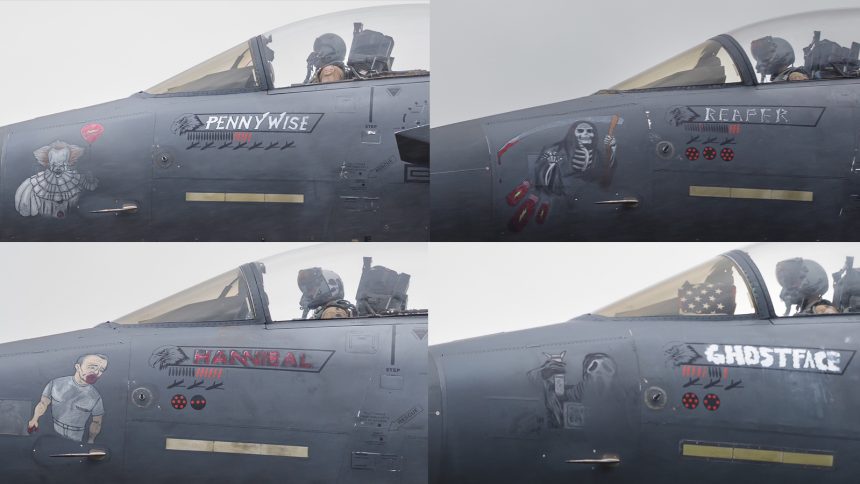Let’s take a look at the JASSM and APKWS markings on the final four F-15E Strike Eagles of the 389th Fighter Squadron “Thunderbolts” as they return from their deployment to the Middle East.
On Jul. 19, 2025, the final four F-15E jets from the 389th Fighter Squadron, 366th Fighter Wing, based at Mountain Home Air Force Base, Idaho, landed at RAF Mildenhall, UK, on their way back from a deployment to the Middle East that began in October 2024.
The four Strike Eagles, flying as TABOR 93–96, arrived at the British airbase one day after the first cell, consisting of eight F-15Es, had landed at RAF Mildenhall.
In landing order, the airframes in the second cell were:
- F-15E 87-182 “Pennywise”
- F-15E 88-1667 “Reaper”
- F-15E 90-245 “Hannibal”
- F-15E 87-190 “Ghostface”
Besides the nose art featuring horror movie characters, these F-15Es also carried bomb markings similar to those observed on the eight aircraft from the first cell, which we covered in detail in our previous article here.
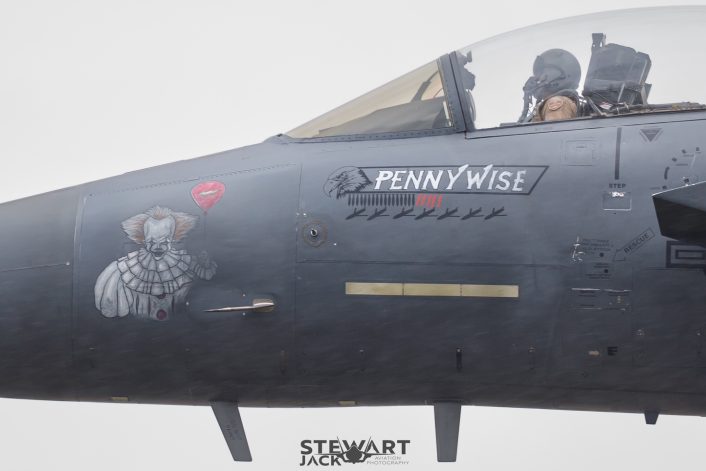
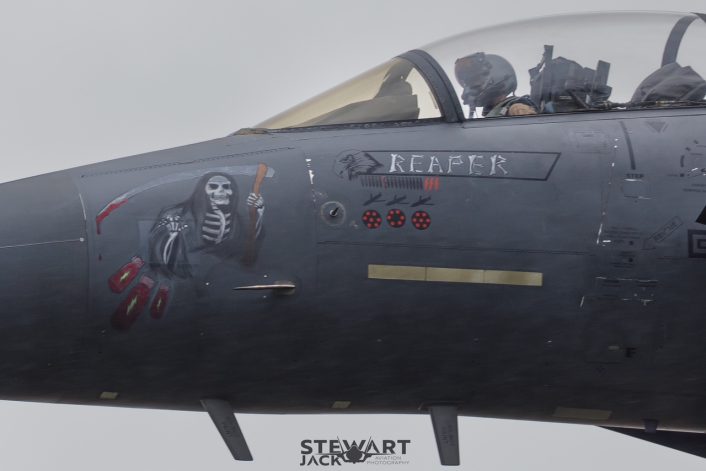
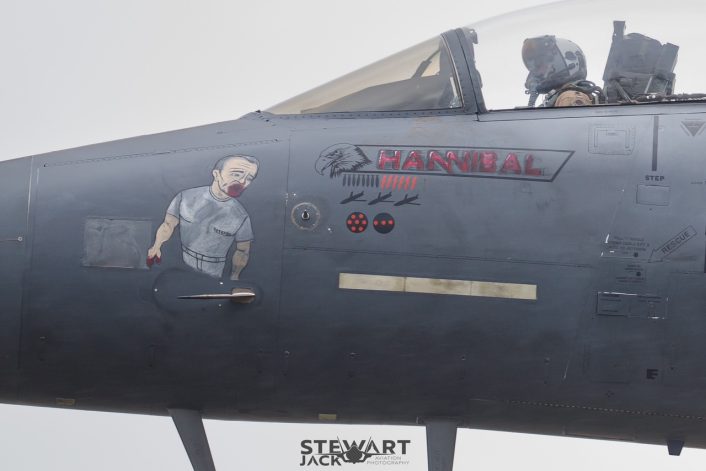
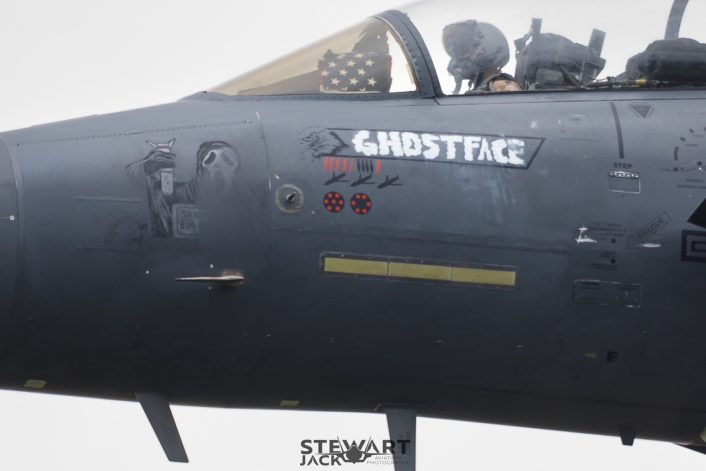
JASSM Markings Reveal Combat Use
As we already explained in our previous story on the Thunderbolts F-15Es and their unique markings, very few details have been disclosed about the missions flown by the 389th Fighter Squadron’s aircrews during their latest deployment. However, based on the bomb markings observed on the aircraft, the F-15Es appear to have been heavily engaged in operations.
In addition to what look like JDAMs (Joint Direct Attack Munitions), the Strike Eagles seem to have employed both AGM-158 JASSMs (Joint Air-to-Surface Standoff Missiles) and AGR-20 APKWS II (Advanced Precision Kill Weapon System II) laser-guided rockets. Among the familiar silhouettes, there are also some red lightning bolts, unidentified at the moment, but likely representing air-to-air weapons.
The presence of APKWS II was somewhat expected, particularly after CENTCOM released a photo of an F-15E (serial 87-0210, “Jigsaw”) deployed to an undisclosed location. Through OSINT analysis, the base was later identified as Muwaffaq Salti Air Base in Jordan. The aircraft carried an anti-UAV loadout composed of six LAU-131A rocket launchers, amounting to 42 AGR-20 rockets. Based on the number of APKWS markings, the Thunderbolts used plenty of laser-guided rockets against Iranian or Yemeni drones.
On the other hand, the use of AGM-158 JASSMs by the F-15Es during their Middle East deployment has not been officially confirmed. Therefore, the bomb markings provide the first “visual confirmation that the radar-evading cruise missile was used.
The JASSM, available in both the baseline variant with a range exceeding 200 nautical miles and the extended-range (ER) version with standoff capability beyond 500 nautical miles, is a GPS-guided, radar-evading cruise missile equipped with a 2,250-pound penetrator/blast fragmentation warhead. It uses a combination of anti-jam GPS and an infrared seeker to locate and destroy high-value, well-defended targets, in all weather conditions and at any time of day.
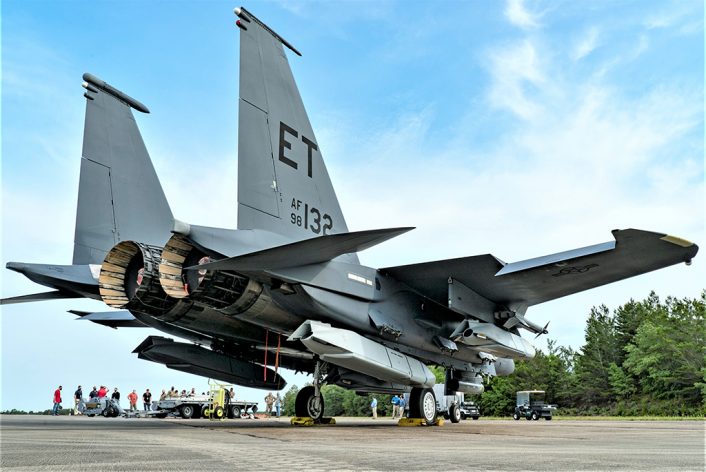
The presence of JASSM markings on the F-15Es returning from the latest deployment suggests the cruise missiles may have been used in theater, possibly in support of Operation Midnight Hammer. More than 125 aircraft, including 4th and 5th generation platforms, took part in the raid, whose most critical phase saw the B-2 Spirits drop 14 GBU-57 MOP (Massive Ordnance Penetrator) bunker buster bombs on Iranian nuclear facilities. There are chances the JASSMs were employed against key air defense sites, radar installations, or hardened command and control nodes, to pave the way for the stealth bombers to safely penetrate Iranian airspace and strike their targets.
As explained in the previous article too, it is also worth noting that the F-15E is set to integrate the AGM-158C-1 LRASM (Long Range Anti-Ship Missile), which was reportedly used in combat for the first time in the region recently.
Anyway, after the stopover in the UK the F-15E of the 366th FW will continue their trip back to Mountain Home AFB: the first six Strike Eagles departed RAF Mildenhall on Sunday, July 20, 2025, to be followed by the remaining six, in the next few days.
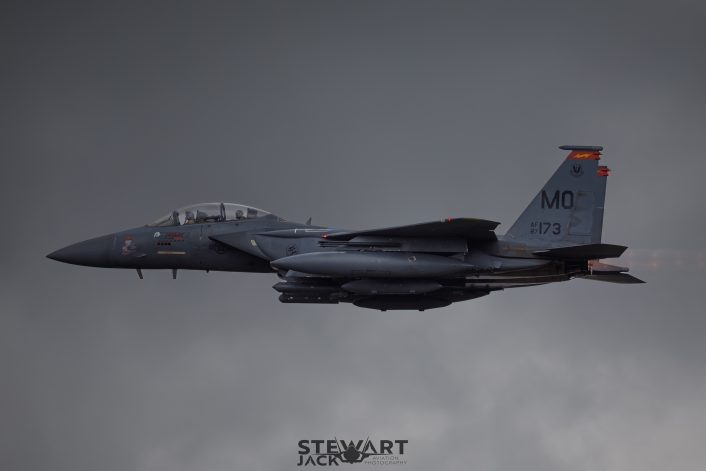
Why RAF Mildenhall and not Lakenheath
As a side note, it’s worth noting that the jets did not land at RAF Lakenheath, as they had during previous returns from the combat zone. The base, home of the 48th Fighter Wing, was closed by a NOTAM (Notice to Aviation, as per official UK terminology, or Notice to Airmen) active on Jul. 17 and 18, and remains restricted until Jul. 26 to pre-approved movements only, with no transient traffic permitted under a separate NOTAM. These closures and restrictions, along with the movements of a C-17 using callsign typically associated with Prime Nuclear Airlift Force (PNAF) missions, have fuelled speculation about the possible return of nuclear weapons to Lakenheath, a topic you can read more about here.
Once again, many thanks to our friend and contributor Stewart Jack for the shots!

